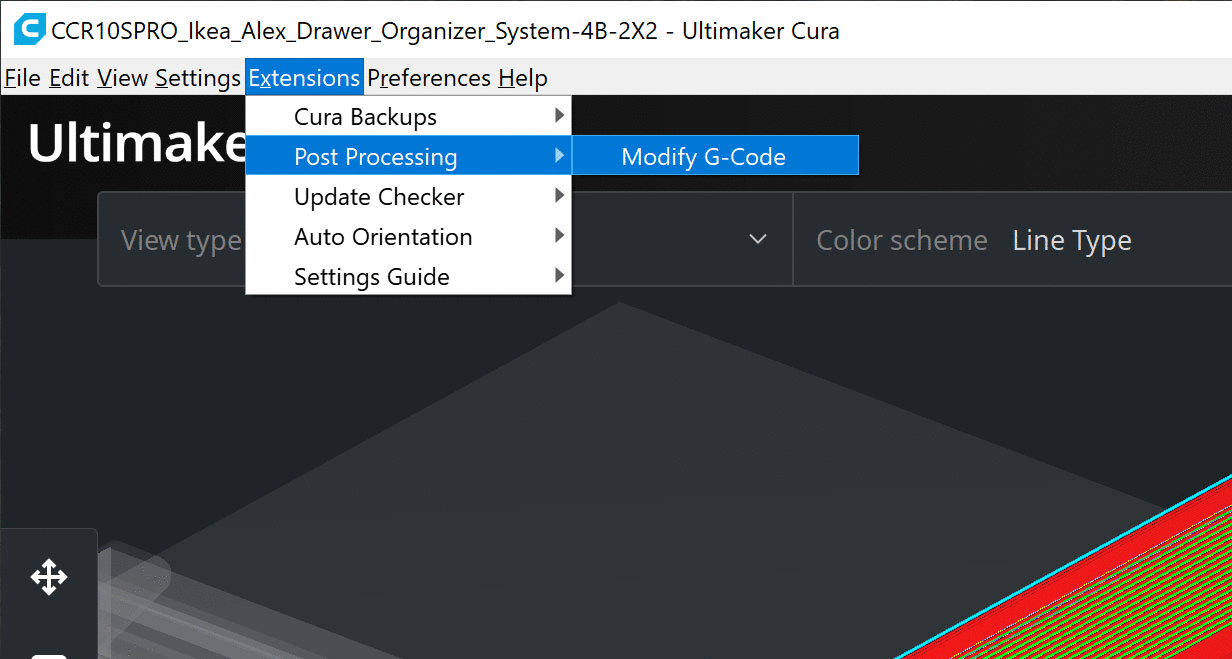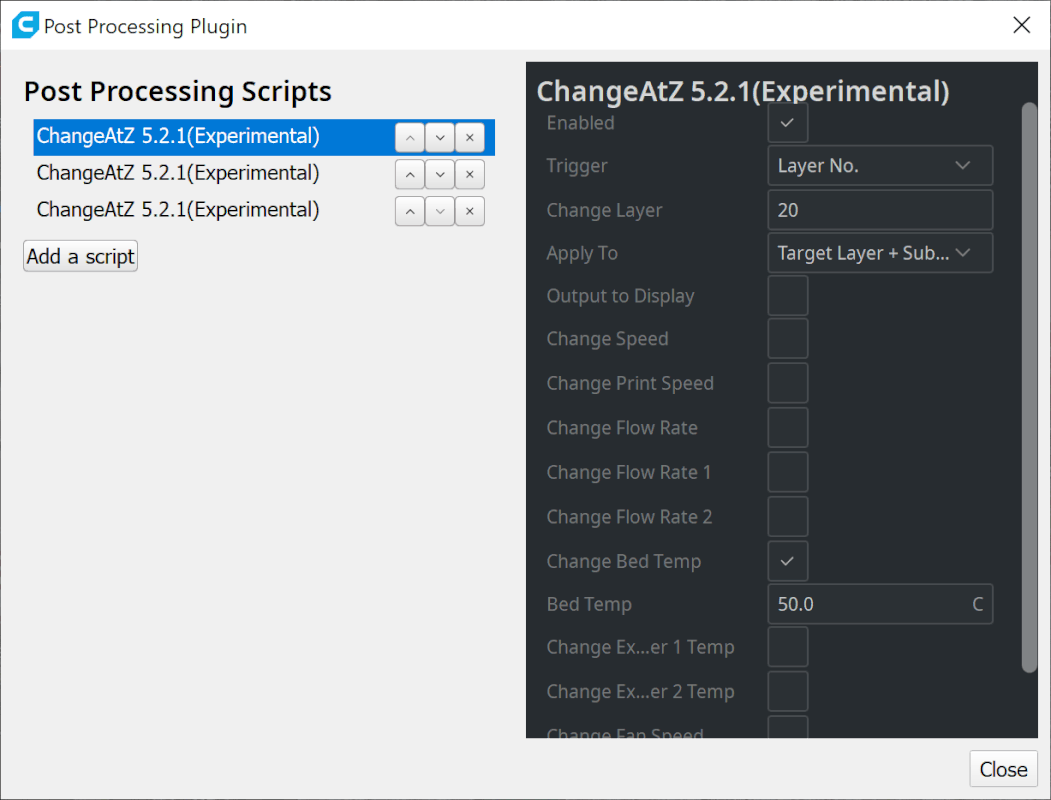The plugin is accessed from "Extensions>Post Processing>Modify G-Code" and is bundled with Cura so it's pre-installed.
The prerequisite for lowering bed temp during a print however is really good bed adhesion. That sounds strange since most of the problems with bed adhesion are related to it being too weak, but the other case seems as common from my experience using a PEI sheet. I have been running more PETG lately, and that stuff loves to stick to PEI, sometimes so well that it's hard to remove. There are limits however, and I have had PETG lift on large flat prints without a brim using this method, so lowering bed temp is probably better suited for tall models than flat ones. TPU is even "worse" and I ruined a PEI sheet on my Ender3 trying to peel off a print recently. As an aside, I don't run much TPU, but have in the past used hairspray as a release agent when running it, and that seems to help remove it from the PEI bed, but in the last case, I ran out of hairspray and ran it without using it.
Since some materials seem to stick pretty darn well on their own, it got me thinking that I could probably shut down the bed part way though a print and suffer no ill effects to the print. Although there is definitely a benefit to using the heated bed on the initial layers, in some cases (for my printer at least when running PETG), there is less benefit as time goes on in a multi hour print where the model is not some squat thing and the nozzle moves well away from the bed during the print. To test it the idea of shutting off the bed after some number of layers (I used 20), I used the "ChangeAtZ 5.2.1(Experimental)" plug-in for Cura and set it to trigger on "Layer No." and the Change Layer at 20, then I set the Bed Temp to 30°C which is around room temp. This worked on a small print, but a larger print had a problem with a crack in a thin wall which I cannot for sure say was related, but after that I changed it to reducing the bed temp in steps of 20 layers by 10°C each time and that seemed to be fine.
To access the "ChangeAtZ 5.2.1(Experimental)" plug-in from the Post Processing Plugin screen, use the "Add a script" button and select the plugin. Multiple scripts can be added this way as shown below:
- Layer 20 - Bed temp 50°C
- Layer 40 - Bed temp 40°C
- Layer 30 - Bed temp 30°C
I'm still experimenting with this method but it has worked well so far and saves some energy. The prints are still just as stuck to the bed so there is no change in that regard.
The "ChangeAtZ 5.2.1(Experimental)" plug-in for Cura also handy for other changes that need to be performed within the g-code at layer heights, but I would use the "filament change" plugin for swapping colors.




 RSS Feed
RSS Feed
